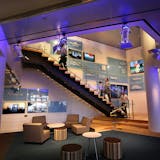Tolls charged to solo drivers using MnPass lanes are based on traffic congestion and an algorithm that adjusts rates every three minutes — far less time than most rush-hour motorists spend in the express lanes.
That had Drive reader Jeff wondering: Can the price of a MnPass trip cost more than what is advertised on electronic signs if the rate goes up after a driver enters the lane?
The answer — with a couple caveats — is no. Once a driver enters a MnPass lane, the advertised rate is locked in for that segment of the trip, even if the rate changes during travel, said Brian Kary, director of traffic operations at the Minnesota Department of Transportation's Regional Traffic Management Center.
"If it went from 50 cents to $1, you pay 50 cents," he said. "We want to keep motorists happy."
Tag readers that deduct tolls as drivers pass by are spaced along the MnPass lanes on I-394, I-35W and I-35E. It's possible there could be a price adjustment in the short time it takes a vehicle to travel from a sign displaying the current toll to a tag reader, but that's a rare occurrence, said Sue Gergen, a MnPass spokeswoman. When it does happen, the system is smart enough to default to the lower price, she said.
The system notes the time a driver passes a tag reader and the toll in effect at that time, Kary said. When a driver reaches a second tag reader, the same process occurs. But the system also looks back to see what a driver was charged when first entering the lane, and what fee was in effect during the prior three-minute interval.
A driver entering the lane at 7:20 a.m., for example, could see a $1 toll but when passing another tag reader at 7:25 a.m. could see the fee went up to $1.50.
If the rate was lower during the first interval, the system defaults to the lower toll, Kary said.



